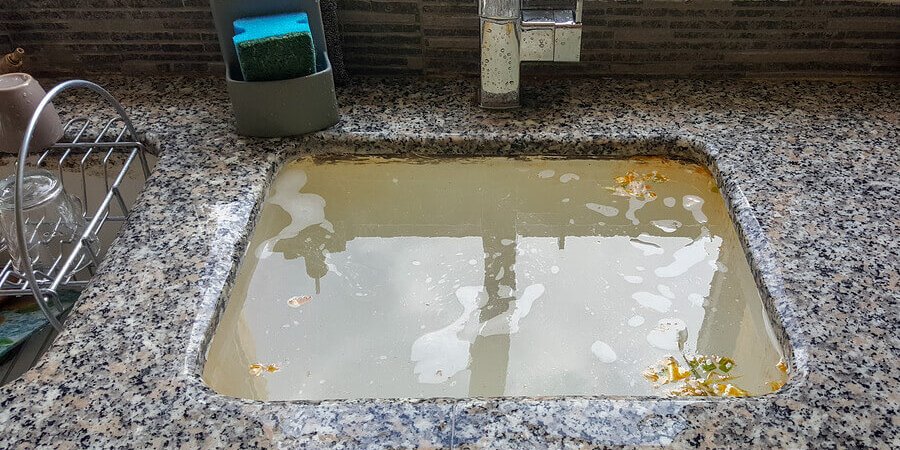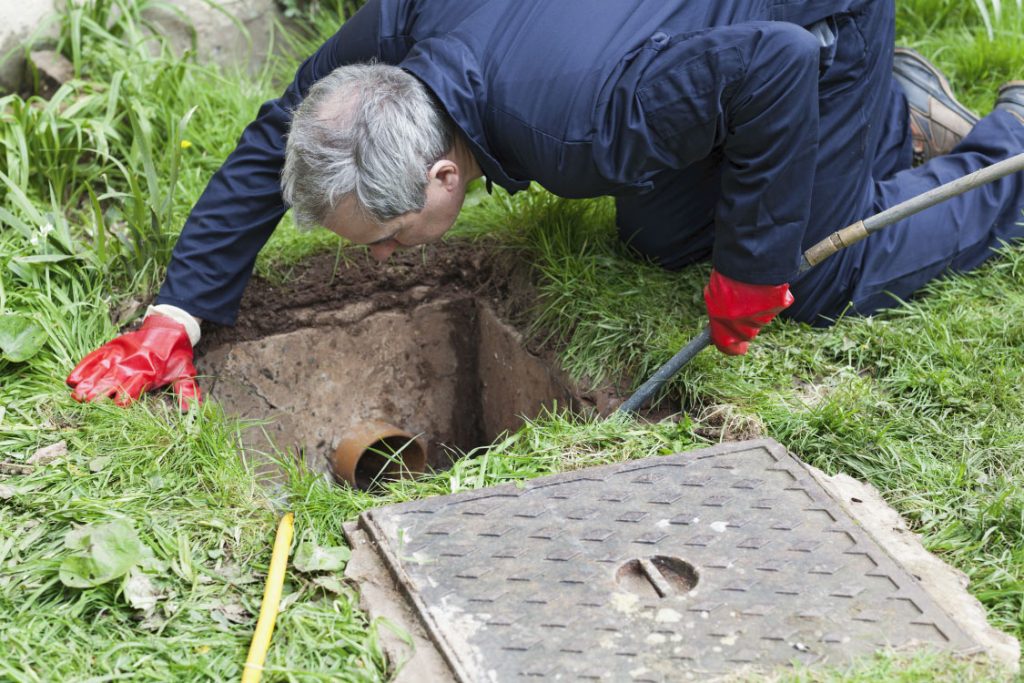This post listed below on the subject of How to handle a clogged drain in your home is without a doubt enlightening. Don't miss it.

Intro
Taking care of a blocked drain can be a frustrating experience, interrupting daily tasks and potentially causing damage to your residential or commercial property. However, prior to reaching out to plumbing specialists, there are actions you can take to deal with the problem on your own. In this overview, we'll check out DIY remedies and preventive measures to deal with a blocked drain efficiently.
Determining the Issue
The first step in addressing a blocked drain is recognizing the signs. Slow-moving water drainage, gurgling noises, foul odors originating from drains, or water support up are common indications of an obstructed drain. Recognizing these indicators early can aid stop better difficulties.
Selecting the Right Plumbing Service
When picking a plumbing service, consider variables such as experience, licensing, and customer evaluations. Select a credible plumbing professional with a performance history of quality handiwork and transparent rates techniques.
Expense Considerations
The expense of specialist drainpipe cleaning company can differ depending upon the severity of the clog and the plumbing's rates. Request quotes from numerous carriers and ask about any type of additional charges to guarantee transparency and avoid surprises.
Safety Precautions
When trying do it yourself drainpipe cleaning, prioritize safety and security. Wear safety handwear covers and glasses to avoid contact with harmful chemicals or germs. Never blend different drain cleaning items, as this can create hazardous fumes.
Instance Researches
Real-life examples highlight the effectiveness of do it yourself options and the relevance of prompt specialist treatment in resolving drainpipe blockages.
Common Causes of Blocked Drainpipes
Comprehending the aspects that add to drain pipes obstructions is necessary for effective resolution. Common wrongdoers consist of hair, soap scum, grease, food debris, and foreign objects like hygienic items or paper towels. Tree roots getting into underground pipes can likewise trigger significant clogs.
DIY Solutions
For small blockages, several do it yourself remedies can be effective. Pouring boiling water down the drainpipe can help liquify grease and particles. Baking soda and vinegar or a blend of salt and cooking soft drink can serve as natural cleaners. Making use of a bettor or pipes serpent to dislodge blockages is another choice.
Devices and Equipment
Having the right tools accessible can make DIY drain cleansing more effective. A plunger is a functional device for removing clogs in sinks, toilets, and showers. A plumbing snake or auger can get to deeper blockages, while drainpipe cleansing chemicals can be utilized meticulously for stubborn clogs.
Preventive Measures
To stay clear of future blockages, taking on safety nets is important. Install drainpipe guards or filters to capture hair and debris prior to they get in the pipelines. Routinely flush drains pipes with hot water to liquify grease build-up, and avoid dealing with oil or strong waste down the drain.
When to Call a Specialist
While DIY services can settle small blockages, specific signs show the demand for specialist assistance. Relentless blockages, foul odors regardless of cleansing initiatives, or multiple drains pipes supporting all at once are warnings that require professional intervention.
Final thought
By following the tips described in this overview, you can efficiently deal with blocked drains pipes and protect against future pipes problems. Whether opting for do it yourself remedies or looking for professional aid, timely activity is vital to keeping a healthy and balanced plumbing system and preserving the honesty of your home.
How to Clear a Clogged Drain Yourself (And When to Call In the Professionals)
What Can Clog a Drain
Dirt Skin flakes Hair Grease Soap scum Food Offset pipes Tree roots Small objects Mineral buildup DIY Tricks to Unclog a Drain
You can fix this! Once you have identified the source of the clog (or have a vague idea), you can try one or a combination of these fixes in order to clear your plumbing.
Wire Hanger or Snake
Untangle and clear out hair from a drainpipe with a homemade snake. Use a straightened-out wire hanger with a 90-degree angle hook to locate the clog and drag out any unwanted material.
Remember not to push the clog further down to where the wire hanger cannot reach! If you need to follow up with a plunger, give it a try. Your efforts might be more successful after it’s been wire-snaked.
If you want to get fancy and don’t have a wire hanger to spare, head to the store and pick up a hand-operated drain snake. You can get one for $10-$30. It may save you the hassle, and provide additional length to reach deep into the clogged pipe.
Plunger
A cup plunger has a suction cup attached to a wooden handle. The rubber creates a seal around the drain, and increases the pressure force of the plunger.
Plunge for 30-second increments to loosen the clog. This may need to be repeated over the course of 15-20 minutes. Once plunged, run the water to flush the remaining material out of the drain.
Remember– never use a plunger if you have used a chemical drain cleaner. These chemicals can splash up from the force of the plunger and cause serious injury or burns.
Boiling Water
Hot water can sometimes break up materials into a flushable amount. Dirt, grease, and soap buildup requires heat in order to unstick from surfaces.
Take your kitchen kettle and heat your water to a boil. Once it reaches a rolling boil, pour it directly down the drain into the blockage. Carefully follow with plunging, if necessary.
Don’t worry if this takes more than one try! It can often take multiple kettles and repeated plunging in order to clear a particularly stubborn clog.
Chemical Drain Cleaner
As a last resort, pick up a bottle of chemical drain cleaner. Drain-cleaning chemicals are potent, and not very good for the environment.
You may need to wear protective eyewear in gloves before handling your bottle of chemical drain cleaner. Follow the instructions printed on the bottle, and flush with water as soon as the instructions allow. Do not follow with plunging.
Baking Soda and Vinegar
As a safer alternative to chemical drain cleaner, baking soda and vinegar can create a chemical reaction that clears tough clogs.
Combine one cup of cleaning vinegar with one cup of boiling water, and set aside. Once you have done this, pour half a cup of baking soda down the drain. Give the baking thirty seconds to settle and cover a large portion of the problem drain.
Following the baking soda, pour down your vinegar and hot water solution. Once the vinegar and baking soda combine, the mixture will bubble and fix. Let this reaction fizzle in the drain for about an hour.
After an hour, follow with a kettle’s worth of hot water. The heat and liquid should flush out any remaining material.
When to Call a Plumber
If your DIY attempts haven’t cleared your clog drain, it’s time to call in a professional. It’s not worth losing access to your kitchen sink or high-traffic bathroom. A clog in a vital area can keep you from the things you’d rather be doing, and derail your routine.
Anytime a clog is causing water to spread is a time to call in a plumbing service. What starts out as a little bit of water can quickly grow into serious, expensive water damage.
Additionally, a serious clog can result in burst pipes or serious leaks. Make sure you know when to take it seriously!
https://myguysnow.com/how-to-clear-a-clogged-drain-yourself-and-when-to-call-in-the-professionals/

As a passionate person who reads about Tips for Dealing with Clogged Drains and Sewer Lines, I assumed sharing that article post was beneficial. Kindly pause to distribute this content if you enjoyed reading it. I value your readership.
Call Today